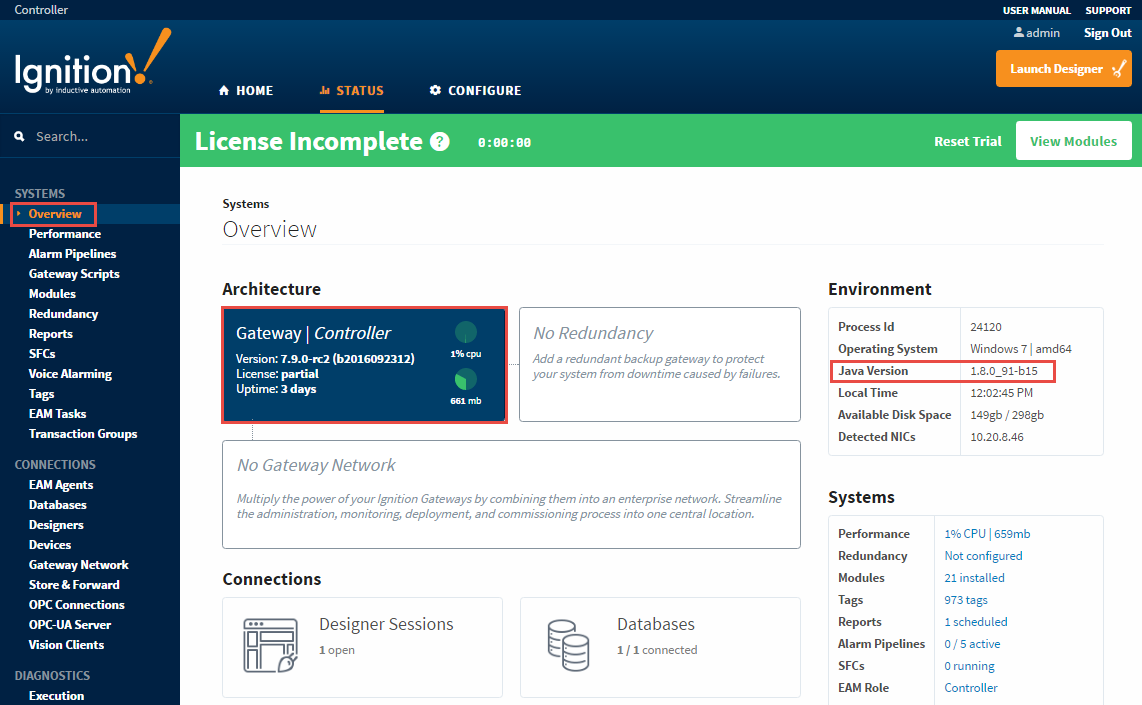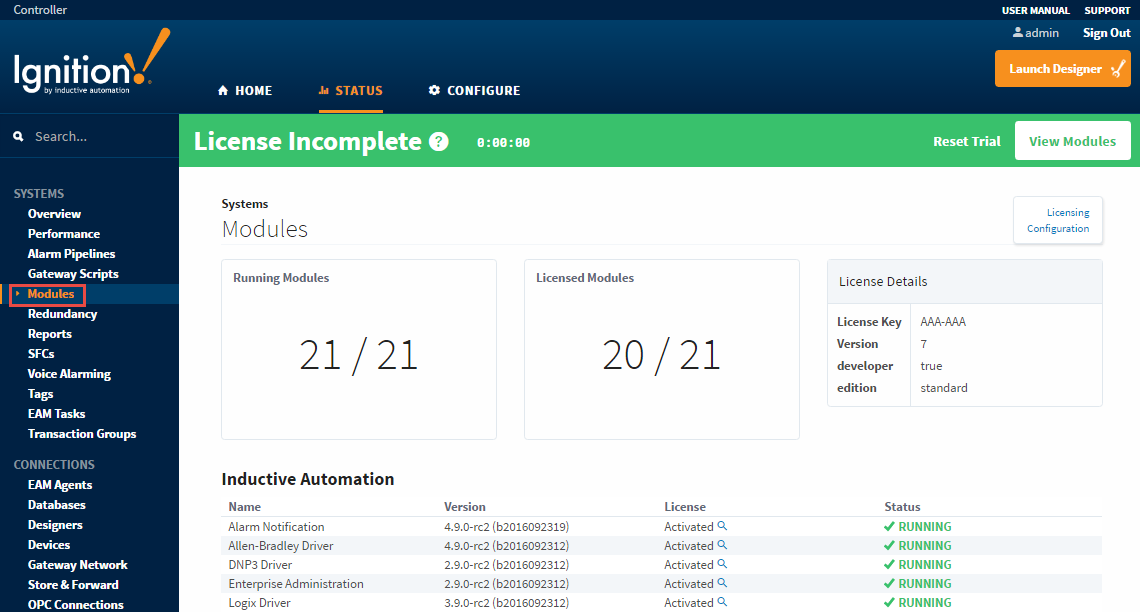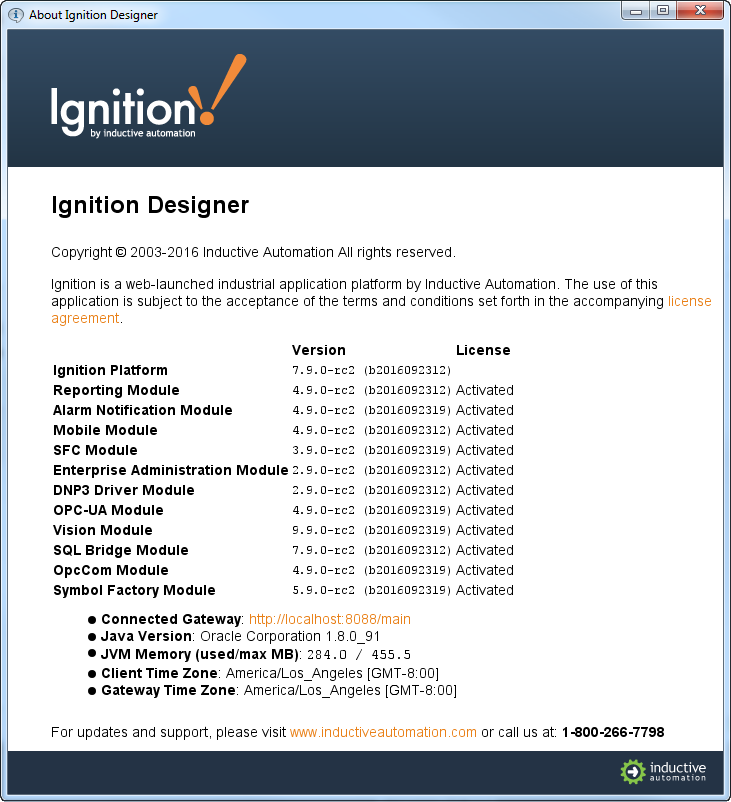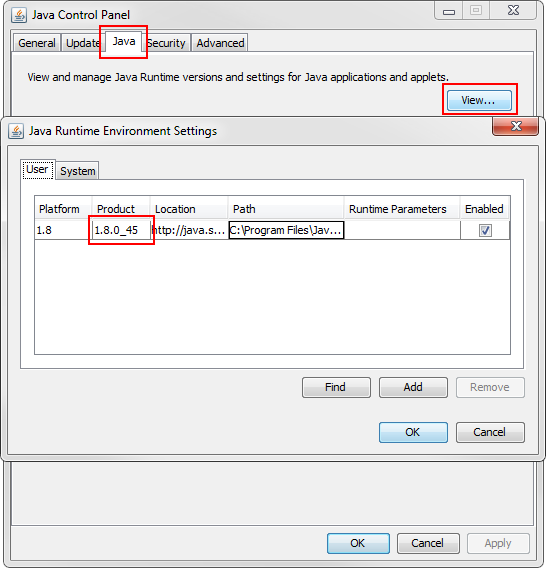Versioning
Versioning in Ignition
When we talk about versioning in Ignition, there are two main things that come to mind: Project Versions and Software Versions.
- Project Versions: Here we are referring to the current and previous states of your project in Ignition. You might have a test server with a development project in addition to the currently running production server. As you make changes and improve your project, these might get out of sync or you may want to roll back to a previous good state after a failed test of new changes.
- Software Versions: Here we are talking about the versions of installed software. What version of Ignition you are using, what version(s) of Java are installed, your database version, etc. This is important to keep track of because backups from one version may or may not work on other versions depending on the type of software or company that makes it.
While they may seem similar, it is important to keep these distinctions in mind while you are developing. Both have considerations that can effect the success of your project.
Project Version Considerations
With Ignition there are ways to keep track of your projects and give you the ability to easily test new changes or go back to a previous stable revision when you need to. Two main ways to control your project versions are:
- Making and Restoring Backups: We always recommend that you create backups regularly, and you can easily restore them to go back to a previous known stable version of your project.
- Versioning Software: Ignition stores its files in a simple to use format on the hard drive. This allows you to use whatever versioning software that you like to create a system to track changes and roll back as needed.
Software Version Considerations
Ignition Version
It is important to have a good idea about what software versions you are using, but we make it simple. Ignition only allows one version at a time to be installed on a computer. This means that you never have to worry about which version you are using at the moment. Ignition versions are made up of three numbers: the Platform, major, and minor version numbers. For example, 7.8.2 is platform 7 (Ignition), major version 8 (new features), minor version 2 (stability improvements).
If you want to know what version of Ignition you are using, there are several places you can find it. The two simplest places to find your Ignition version are in the Gateway Webpage and in the Designer. Both of these also list the version of Java that the Ignition service (Gateway) is using. This may not be the only version of Java installed.
- The Gateway Webpage: in the Status section under Systems > Overview.

- There is also a Modules page under Status > Modules that will tell you the versions of each module.

In the Designer: In the Menubar under Help > About Ignition Designer. This page will tell you the version of the platform (Ignition) as well as each module.

Ignition backups will work on any version that is the same or newer. For example, a backup taken from 7.8.0 can be restored in 7.9.1, but the opposite is not true. If you are developing on a test server, make sure that they have the same version of Ignition so your backups can be transferred seamlessly.
Java Version
You can have multiple Java installations (all different versions) on one computer. Java uses version number similar to Ignitions. For example, Java might be version 1.8.0_45 but we often refer to Java as "Version 8 Update X." In this example, the 1 means Java, and it is version 8.0 update 45. The best way to check what Java versions are installed depends on your Computer's operating system, but in Windows you can open up the control panel and click the Java option. If you have multiple versions of Java installed, check the Ignition version (above) to see which Java version is being used. If Ignition is using the wrong one, you can easily Change your Java Version. Depending on your OS and Java version, your Control Panel might look slightly different than this:

Database Version
It is not uncommon to connect Ignition to multiple types and versions of Databases, but it is very rare to have multiple versions of a database installed on the same computer. Usually you will see multiple servers handling the load of multiple databases. Fortunately the Ignition drivers for connecting to a database don't work for specific versions, they will work for all database versions. Just pick out the right type (MSSQL, MySQL, Oracle, etc.) and the driver will do the rest. Check out the Database Connections section for more information on getting connected.
Using Separate Production and Development Servers
Once you complete your project and have it in production, it is a good idea to have a separate Ignition development server for making future changes. That way, the changes will not affect the plant floor and can be completely tested before rolling out to the production environment. It is also recommended to have a development server to perform any Ignition upgrades so any problems can be addressed before moving to a production environment.
Considerations
There are a few things to consider when having a production and development server. First, the development server should have its own PLCs and SQL databases. You do not want the development server to point to the live PLCs because it would be possible to accidentally write values to PLCs that may start or stop equipment. Likewise, you do not want the development server to point to the production database or else you may risk duplicating data.
Second, the development server does not need a license because you can run the server in its two hour trial mode. Of course, you can get a second license for longer testing periods if you need to.
Third, you should never move a Gateway backup from the development server to the production server. If done right, the development server is pointing to the development PLCs and databases. If you move the Gateway backup, these connections will be saved inside the backup and restored on the production server. Which is bad because the production server should be pointing to the live PLCs and databases. Instead you should backup individual projects and tags separately to move them to the production server. Ignition projects use database connections and tags but are connected only by name. This means the production and development servers can have the same PLC and database names, but behind the scenes they will point to different places.
When you restore a project to the production server, remember the projects contain the windows and the templates and not the Tags and other global resources. You will have to transport the Tags and other changed items in addition to the projects. See Gateway vs. Project Backups for more information on what is included in each type of backup.
Enterprise Administration Module
The EAM allows you to control multiple Gateways from one central location, but can also be used for version control. It has the ability to push resources from one Gateway to another, and this can be applied to a production/development system. You can create tasks that will push your changes at the click of a button. See the Enterprise Administration section for more information on sending projects.
